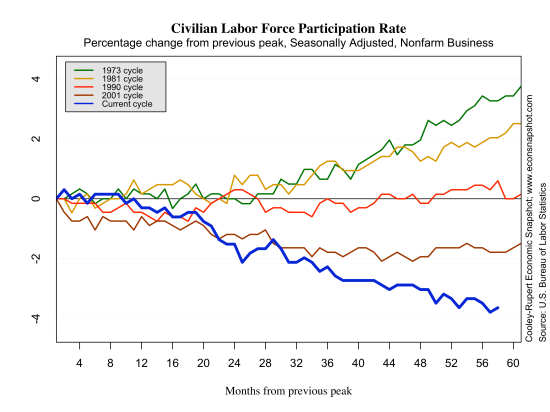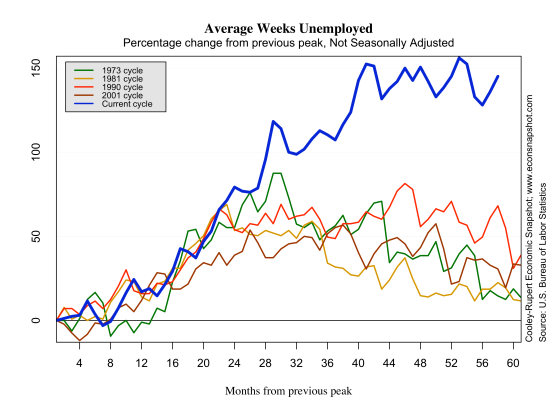The Employment Situation released today from the BLS, shows non-farm payrolls increased 114,000 in September. The report included upward back-revisions for August (142k from 96k) and July (181k from 141k). The increase was still below the average monthly employment gain in 2012 of 146,000, and below the revised employment gains from July and August of 181,000 and 142,000, respectively. As seen in the graph below, both the pace and the level of the recovery of the labor market are still well below the average from the previous four cycles. Employment gains were primarily attributed to service industries, led by health care (+44K) and transportation and warehousing (+17K). Goods producing industries declined over the month. Particularly discouraging was the decline in manufacturing payrolls (-16K) coming on the heels of the positive report from the ISM that overall manufacturing activity increased in September.
The national unemployment rate decreased over the month from 8.1% to 7.8% and for the first time since the recovery began, the decline wasn’t affected by a reduction in participation. The labor force participation rate increased slightly to 63.6%. While still far below the participation rate of 66% at the peak, the dual increase in participation and reduction in unemployment is a sign for cautious optimism.
The BLS also recently released the preliminary estimate for the benchmark revision for March 2012. The estimate revises employment upward for March 2012 by 386,000; moreover, private employment revised up 453,000.
There has also been much ado about the massive increase in the seasonally adjusted one month change in household employment numbers from the CPS–the increase reported is a whopping 873,000. Was there such clamor back in January 2012 when that same statistic was reported as 847,000 (establishment survey reported +275,000)? Or the 991,000 (establishment survey reported +95,000) increase in January 2003? Or the 2,036,000 (+248,000 for the establishment survey) in January 2000? The household numbers also show that of the 873,000 increase in employed persons, 582,000 were part time.








